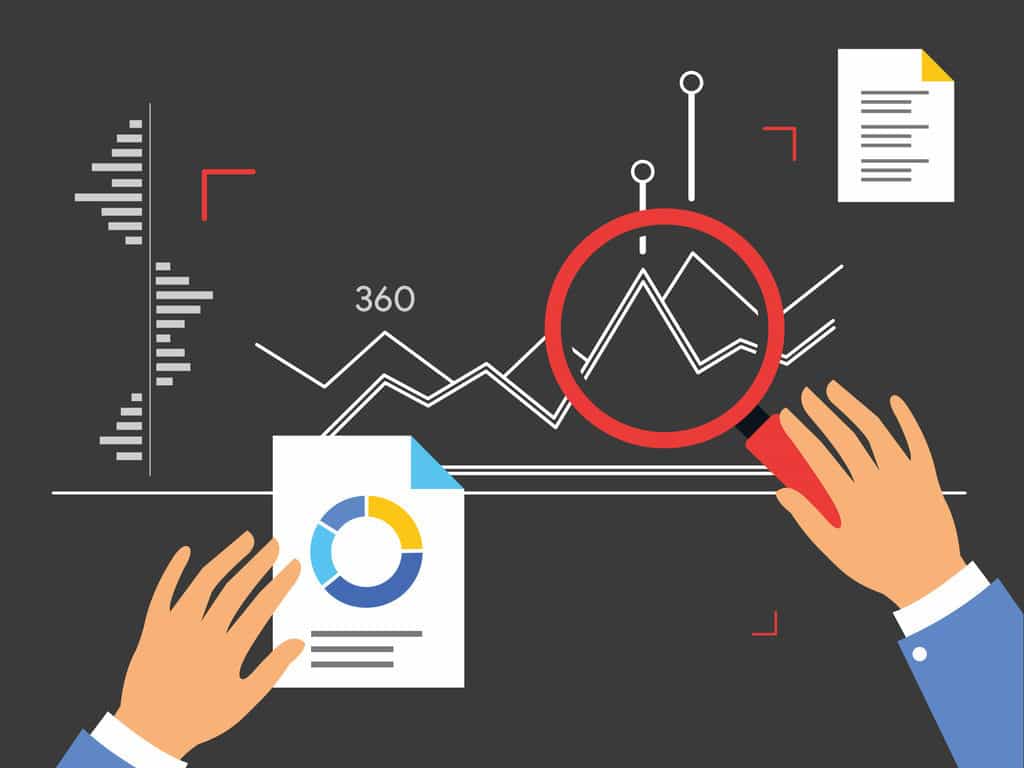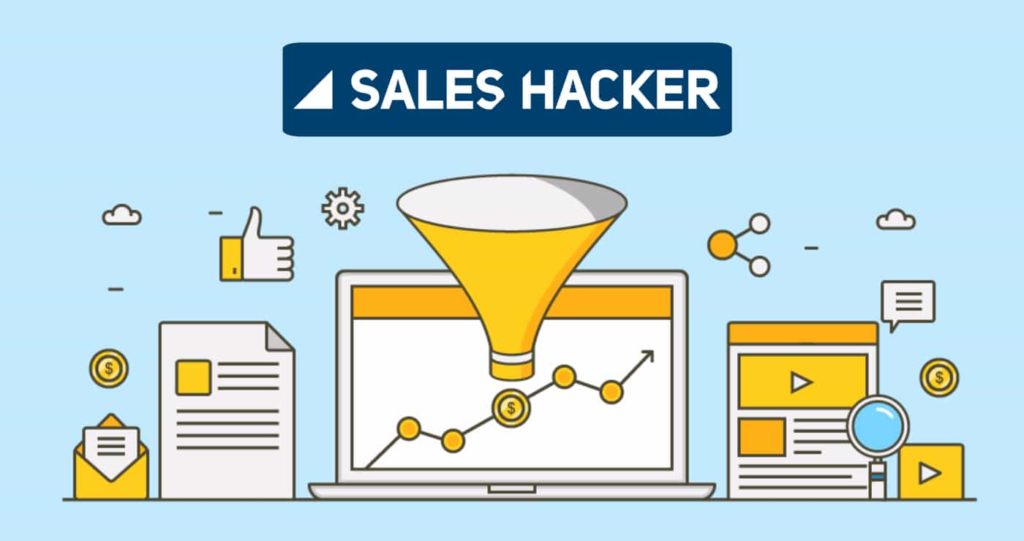Sales forecasting is a crucial business exercise.
Accurate sales forecasts allow business leaders to make razor-sharp decisions about quota-setting, budgeting, headcount, and revenue.
By contrast, an inaccurate sales forecast leaves sales managers wondering whether they’ll actually hit quota.
Let’s look at what sales forecasting is, and some of the basics you need to get it right.
Table of contents
- What is a sales forecast?
- What you need for accurate sales forecasts
- Sales forecast methodology
- Sales forecasting examples
- Sales forecasting tools
- Key takeaways
What is a sales forecast?
A sales forecast is a prediction of future sales revenue. Just like a weather forecast, your team should view your sales forecast as a plan to work from, not a firm prediction.
What is a sales forecast based on?
Sales forecasts are usually based on historical data, industry trends, and the status of the current sales pipeline.
What are sales forecasts used for?
Businesses use the sales forecast to estimate weekly, monthly, quarterly, and annual sales totals.
Pro tip: Sales forecasting is different from sales goal-setting. A sales goal describes what you want to happen. A sales forecast estimates what will happen.
What you need for accurate sales forecasts

1. Get reliable data
Good data is the most important requirement for a good sales forecast. That means that getting hold of good data is crucial.
Is your company fairly established? Use your historical data to model future performance.
If your company is fairly new and you don’t have historical data yet, look at the industry averages to set benchmarks.
Before you begin to think about how to forecast sales, here’s what you need to do, step by step:
2. Document your sales process
Without a clearly documented sales process describing the actions and steps it takes to close a deal, you’ll have difficulty predicting whether any single deal will close.
3. Set your quotas
While your forecast may be different from your goals, you won’t know if your forecast is good or bad unless you first have a target.
Make sure each rep has an individual quota, as does the entire sales team. Read more about setting sales goals or quotas here.
4. Set a benchmark or a current average of some basic sales metrics
Having easily accessible measures of the following basic sales metrics will make forecasting much easier:
- The time it takes the customer to express interest
- How long it takes to close a deal
- The average price of a deal
- The duration of the customer on-boarding process
- Average renewal or rates, or how frequently you get repeat business
- Conversion rates at each stage of the sales process
Essentially, you want to define the average duration and performance of your sales process.
5. Understand your current sales pipeline
Make sure you understand what’s in your current pipeline, and that your CRM is accurate and up-to-date. If you don’t have a CRM, forecasting is more difficult, but not impossible.
Sales forecast methodology
There are several methods you can use to forecast sales. Many businesses use two or more sales forecasting techniques together, to create a range of forecasts. That way, they have a best-case scenario and a worst-case scenario.
Common sales forecasting methods include:
1. Sales reps’ opinions
Many sales managers simply ask their reps: “When will this deal close, and how much will it close for?”
I… don’t think you have to try very hard to guess that this isn’t a great method.
While this is technically a method you could use to create a sales forecast, your accuracy is going to plummet for two reasons:
- Sales reps tend to overestimate sales forecasts
- This method doesn’t offer a repeatable process, so there’s no way to generate a consistent forecast
Unfortunately, many companies rely on this to estimate future sales. Don’t be one of these companies! Read on for better ideas.
2. Historical data
When you use historical data, you review past performance under similar conditions to estimate how you’ll perform today.
For example, you may know that your business typically grows at 15% year over year. You also know you closed $100k of new business this month last year. That would lead you to forecast $115,000 of revenue this month.
This method is slightly more accurate but ignores other factors that may have changed in the last year, like the number of sales reps you have, or how your competitors are doing.
3. Deal stages
In this forecasting method, you assign a probability of closing a deal to each stage in your sales process. Then, at any given time, you can multiply that probability by the size of an opportunity to generate an estimate of the revenue you can expect.
This forecasting method is better still and is very popular because of its simplicity. However, it does have a weakness: it ignores the age of the opportunity. If two opportunities have booked a sales demo, but one is three weeks old and the other is three months old, are they really equally likely to close?
4. Sales cycle forecasting
As a result, an alternate forecasting method is to use the age of the sales opportunity, rather than the probability, to assess the strength of the pipeline.
It compares how long a deal has been in the pipeline, compared to the normal length of time it takes to close a deal. If you have different products, and different sales cycles depending on whether you’ve had a referral or you’re following up a lead from prospecting, then you’ll need to separate those out to get a prediction for how likely a deal is to come off.
This method needs accurate data. Everything needs to be logged correctly in the CRM so you can see the kind of lead it is, and how long it’s been in the system. If you don’t have a CRM that records all of that quickly and easily, it can require your reps to enter a lot of data.
5. Pipeline forecasting
This method is much more accurate but still more reliant on a high quality of data. It looks at each opportunity sitting in your pipeline and analyses it based on a number of factors, which could include age, deal type and deal stage.
This is a relatively sophisticated method which means it’s unlikely to work without custom tools which are capable of analysing what’s in your pipeline.
6. A custom forecast model with lead scoring and multiple variables
It comes as no surprise: This is the clear winner.
This forecasting method relies on a combination of all of the above. It has some similarities to the pipeline forecasting method, but it has greater depth and complexity. Usually, you’d need an analytics tool or advanced CRM reports set up to help create these forecasts. You also need extremely good data in the first place, so you’re relying on your reps to enter a lot of accurate information.
If you have those resources, this method of sales forecasting can be most accurate. Also, you can take into account the age of an opportunity, its current stage in the sales process, the characteristics of the prospect that make them more likely to purchase, and more.
Bonus: Forecasting methods: 7 different approaches to predicting revenue
Sales forecasting examples
Here are some basic examples demonstrating how sales forecasting is done in the real world.
Example 1: Forecasting based on historical sales data
Let’s say that last month, you had $150,000 of monthly recurring revenue and that for the last 12 months, sales revenue has grown 12% each month. Over the same period, your monthly churn has been about 1% each month.
Your forecasted revenue for next month would be $166,500.
You multiply last month’s revenue by your expected growth, and subtract your expected churn:
($150,000 * 1.12) – ($150,000 * .01) = $166,500
Example 2: Forecasting based on your current funnel

Let’s say you have three open opportunities this month:
- One where you’ve just had a quick phone call, with an expected value of $1,000.
- One that has received a full demo, with an expected value of $1,500.
- And one with an offer, with an expected value of $1,200.
You’ve done your math, and you know that in each of these stages, any given opportunity has the following likelihood of closing:
- “Connect Call” = 30% chance of closing
- “Demo” = 40% chance of closing
- “Offer” = 70% chance of closing
You multiply that probability with the forecasted value of the deal, and sum them all up to come up with a total sales forecast of $1,740, like in this example:

Example 3: Forecasting based on lead scores and multiple variables
You’ve really done your research, and have lead scoring set up in your CRM. You group your leads into three groups of varying quality: A, B, and C. These determine how likely an opportunity is to close.
You also know that companies with less than 50 employees close at a slightly lower rate, and companies larger than 50 employees are more likely to close.
You could then use average opportunity sizes to calculate the forecasted value of any given opportunity, using a table like this:

Bonus: 3 proven sales forecasting methods for greater accuracy
Sales forecasting tools and tech

Looking for specific tech tools to consider? Check out our top 12 sales forecasting tools list.
CRM: CRM software combines the storage and retrieval power of a database with dedicated sales tools that help reps close deals. These features may include lead tracking, funnel analytics, call sequences, and reporting features. You’ll need to choose a CRM based on the size and nature of your business. There’s a lot you can do to make the most of your CRM.
Excel or Google Sheets: If your company is just starting out or only has a few products, spreadsheet software like Excel should suffice for building your sales forecast. For a cheap tool, it’s flexible, conditional, and you can build great charts. But it’s also time-consuming and easy to make errors in, so it may not work for a larger operation.
Sales analytics platforms: Sales analytics tools combine data for many products and services, build forecasts, and give you deep analytics. Plus, many also have helpful graphs and charts built in.
Dedicated analytics tools also have the advantage of staying updated in real time. They can give clearer insight into sales pipelines, products, and staff performance. And they can give more information about any gaps in the process. They can help with everything from spotting opportunities for growth to working out which team members to assign to which clients.
Lead scoring tools: Lead scoring tools help you work out which prospects are worth targeting for sales, and what priority to give them. They allow you to grade prospects according to actions on your website, outcomes of conversations, and any other touches that your team deems pertinent to the sales process.
Also, a lead scoring tool can help your marketing team with campaign segmentation, by helping you identify who’s ready and willing to buy, and who needs more work, as well as the level and reason for engagement. And it can help with content personalization by helping you identify the prospect’s current level of interest in your business, and the areas that the prospect has already shown interest in.
Project management tools with resource allocation: Follow-through is the most important part of your sales cycle, and is the only way to build strong customer relationships.
Project management tools help your team stay on task and ensure that the team has the resources to complete the project. Project management tools allow you to cut out much of the manual work of tracking what’s been done and when. They can also allow better integration with other teams, who may well be using the same tools.
Accounting Software: If all you want is a new revenue forecast, more basic tools are fine. But the value of a sale depends not just on the size of the deal, but the costs it creates elsewhere in the business.
To make really accurate sales forecasts, you need to understand the run-on impact. If you want to forecast gross margins and account for the cost of goods sold, you may need to include data from your accounting software in your forecasting exercise.
Sales forecasting: Key takeaways
- Sales forecasting is an educated guess about future sales revenue that uses historical data and common sense to project monthly, quarterly, and yearly sales totals for a business.
- Your team should view the sales forecast as a plan to work from, not a firm prediction.
- Before you try to build a forecast, estimate the length of your average sales cycle and conversion rate.
- There are several different types of forecasts you can build. Test various methods for accuracy within your business.
 Updated by Kendra Fortmeyer @ Sales Hacker 2023
Updated by Kendra Fortmeyer @ Sales Hacker 2023



